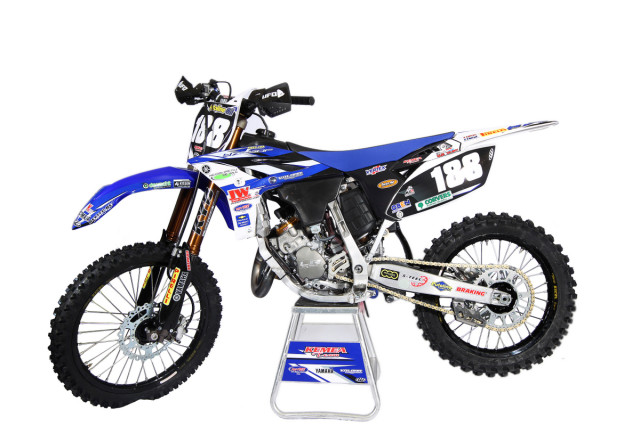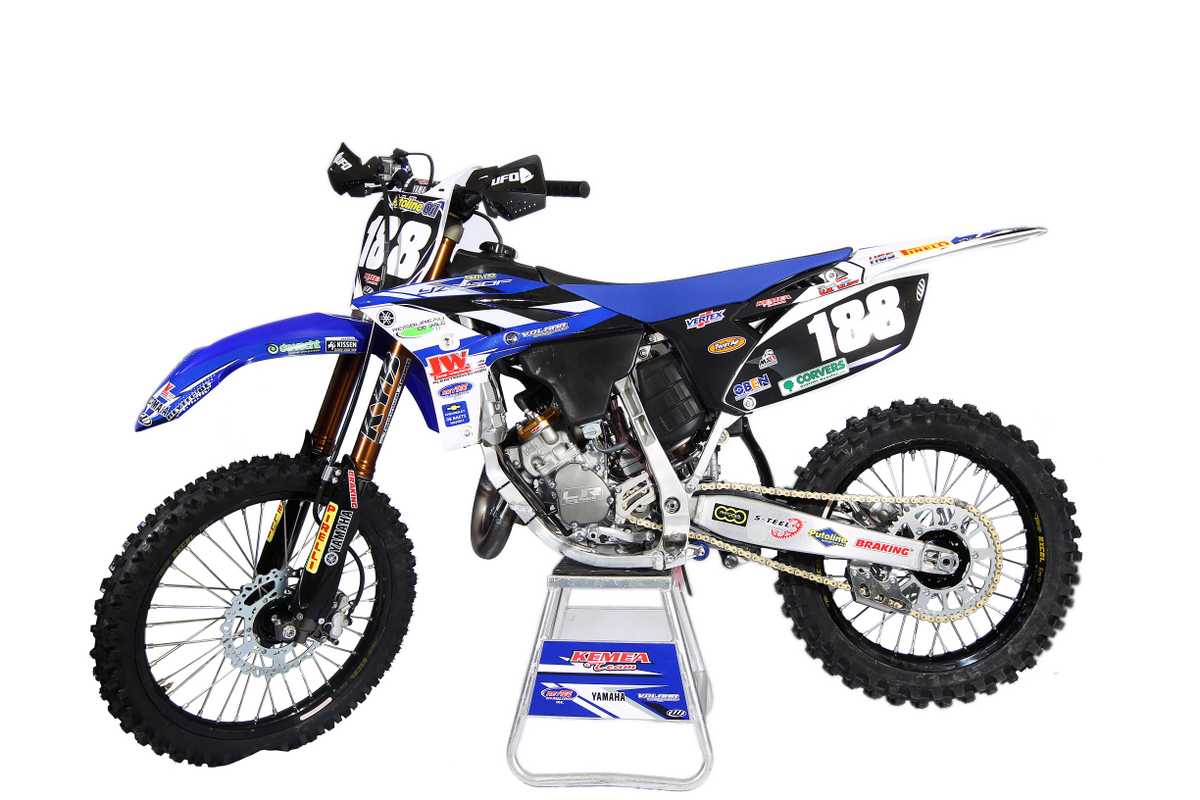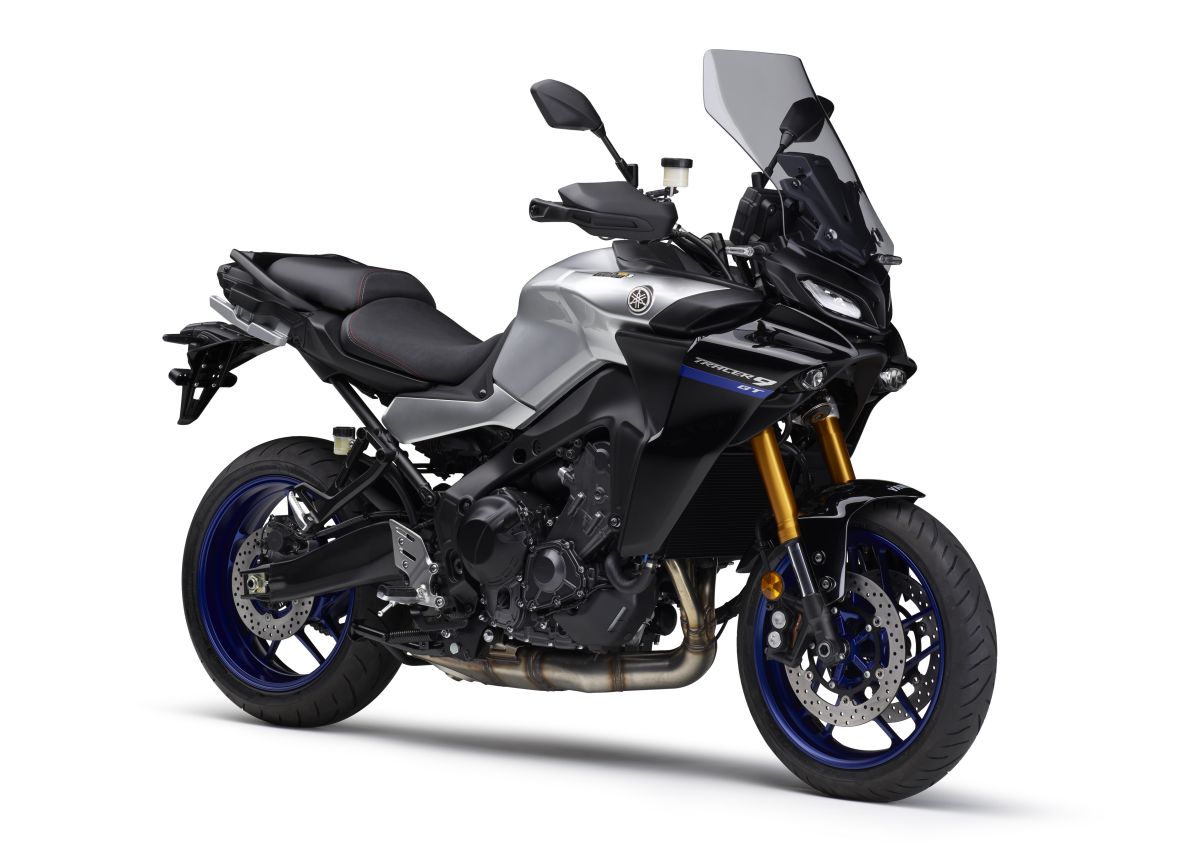
The sound changed, the mood changed and for a while it seemed that the sport would make a wholesale change. When four-stroke engines punched their way back into motocross at the turn of the century Yamaha were at the forefront with their innovative YZ400F; an iconic motorcycle that Doug Henry achieved distinction with victory in AMA Supercross but also Andrea Bartolini thanks to 500cc World Championship success in 1999. The writing was apparently on the wall for the two-strokes as manufacturers embraced a new cycle and range of possibilities for engine and performance development. The YZ250F and YZ450F were the fine-tuned results of investment and the growing trend for consumer preference.
This wondrous search and thirst for torque quickly fed into a new format of the sport as 125, 250 and 500cc categories – classes that had come to define the shape of motocross across the decades from the 1960s to the end of the century – morphed into MX1 and MX2.
The four-stroke era blossomed from the early ‘00s. The bikes became lighter, more powerful and quieter and also influenced a generation of young and fast talent who learned a different style of motorcycle racing.But were the marginalised two-strokes really on their last legs?
There might be discrepancies with the manufacturers with regards to the production of the engines – Yamaha is the only Japanese firm to still offer a comprehensive line-up from 85 to 250cc for example – but the controllers of the sport at FIM level and also in the burgeoning European Championships are putting the onus back on to the screamers.
At the root of motocross (and perhaps all motorcycling as off-road is normally the easiest first step for any youngster to twist a throttle) the two-stroke motorcycle didn’t quite die-off as expected. 65 and 85cc machinery provided a natural progression for those who had taken their initial steps with special and heartfelt bikes like the Yamaha PW50. Two-strokes were still the ideal entry level to the two-wheeled world as the bikes held aloft principals that stand strong to this day: manageable technology, low cost maintenance, lighter riding experience and skill-set building.
“Two-stroke motocross bikes are important to Yamaha, in particular for the kids and young customers in general,” affirms Laurens Klein Koerkamp, Yamaha Motor Europe’s Racing Manager. “They offer a relatively affordable start in the motocross world, are easy to maintain – for example by the father – and are a good base for youngsters to learn how to control the throttle. Sometimes I have the feeling that people think that only some European manufacturers still make two-strokes but Yamaha is offering a full range of very competitive YZ85, 125 and 250cc models.”Motocross in Europe is angled directly towards the FIM Motocross World Championship and sees the two-stroke playing an essential role in the path of any ambitious junior athlete or kid with eyes on professional status. Regional European series on 65s and 85s lead into the eight round EMX125cc championship that is run at Grand Prix events and on the best stage possible. The FIM and Youthstream – promoters of Grand Prix – even announced a new European Championship to sit alongside the MX1 and MX2 division from 2014 that will see two-strokes up to 300cc take to the line. Youth development has become a more important and visual side of any brand’s work in the sport over the past five years. With the MX2 class carrying an age limit of 23 years and the elevated status of the European competitions, teams like the Kemea Reytec Van de Laar Yamaha squad – that functions in EMX85, EMX125, EMX250 and MX2 – provide a well-supported and professional ‘ladder’ for aspiring racers. At the core of the Belgian team’s work is their attitude to the development of Frederik Van Der Vlist (Dutch) and Cyril Genot (Belgian). With two other important ingredients also in place: the YZ two-strokes and the presence of former GP winner Marnicq Bervoets.“I think what we are doing here it is really good,” says the experienced and knowledgeable Belgian. “Two years ago I was working with a young kid who had to move straight onto a 250 four-stroke to continue his progress and you could see the difference in what he had to handle. They are heavier and more powerful, too much actually. Kids need a lighter bike to make a better step. They are still growing in their mid-teens and they might not be strong enough at that age for a four-stroke. There had to be a decent stage between moving from 85cc to the four-strokes and the 125 is pretty essential for that and their career. It is also important to try and avoid big injuries. I think it is a very good system now in terms of progression.”So far the team have enjoyed fruits of their labour with Peter Van de Laar looking after the tuning of the engines from his Dutch workshop. The highly-rated Genot is currently second in the 85cc Dutch Open Championship, scoring a double win in the last round and already catching the eye with his speed in the European regional series. Van Der Vlist is proving to be formidable force on Dutch soil and is leading the 125cc points table by a hefty margin. He is also third in the EMX125 standings with three of the eight rounds already in the bag. In France the YZ125 is the choice of more than half the field in the national series. The French Federation’s ‘L’equipe de Franc de motocross Espoir’ fields Nicolas Dercourt on a YZ125 and the teenager has finished on the podium in the last two rounds of the EMX125 contest after also lifting silverware in 2012 and currently lies fourth in the championship. All the youngster are making good progress on the YZs.“The bikes are fast and hugely reliable and through our YRRD Rinaldi racing parts programme we offer 125cc kits which are very popular, particularly in France,” said Klein Koerkamp.
“The Yamaha YZ125 hasn’t changed that much out of Japan but we have a set-up with Yamaha Netherlands and Van der Laar with a different sub-frame and of course overall tuning and we are very competitive,” says Bervoets. “The development has been small but we have worked hard. Van der Laar is very interested in helping young riders on two-strokes. They are always tuning and working on the bikes but usually the modifications are small because it is not easy to make big steps with the engine. The power is good though and strong enough to be competitive and serve its purpose as being the next educational step. At the last EMX125 round in Latvia in early July we saw four YZ125s in the top ten, all with different tuning.”
“You know, kids can change so much and so quickly between the ages of 13 and 17,” continued Bervoets. “It is a crucial stage of a career and the two-stroke allows the riders to play more with the bike and develop their technique. Yamaha have the right approach with their two-stroke and four-stroke motorcycles. I hope one day manufacturers will bring modern two-strokes right up to the level alongside the advanced technology on the four-strokes so it means absolutely all riders have a good choice.”
Photos courtesy of Kemea Reytec Van de Laar Yamaha/Christophe Desmet and Max Zanzani



